Protein is incredibly important and without it, our body composition and health greatly suffer as a result.
Proteins are an essential nutrient and can be broken down into 20 Building Blocks known as amino acids. Out of these 20 amino acids, nine are essential.
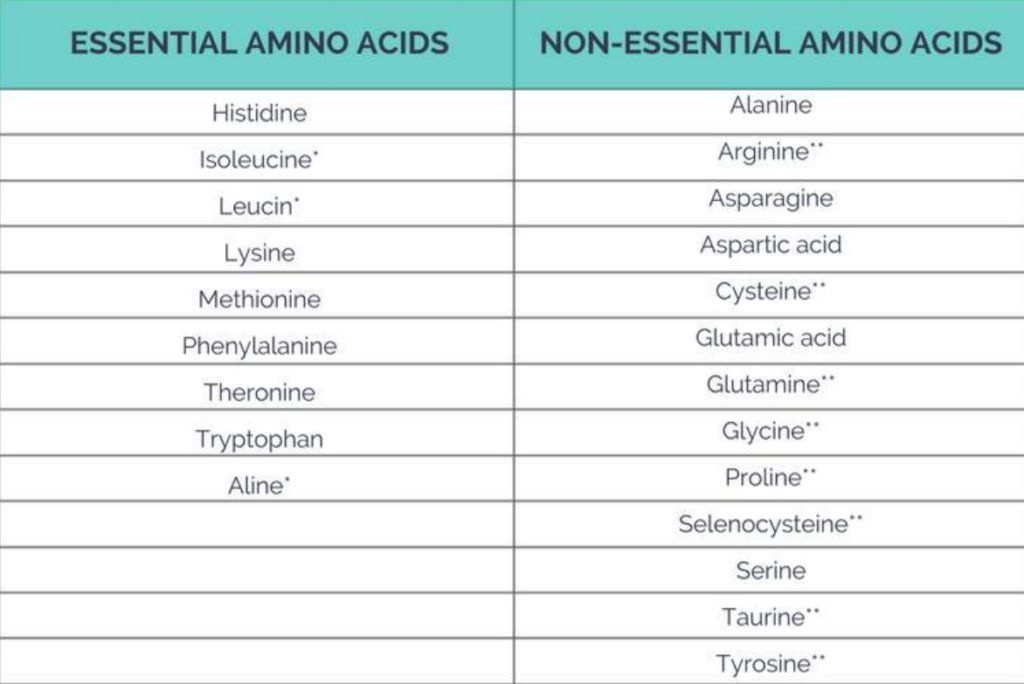
As the body cannot synthesise its own essential amino acids, we must obtain these from animal and plant sources. The other 11 aminos can be synthesised by the body, making them non-essential.
One of the most popular methods of classifying proteins in the food is by its biological value. The biological value of a protein is based on its quantity of the essential amino acids. A food with a high biological value, also known as complete protein, contains all nine essential aminos. This is commonly seen in Animal and Dairy products. A food with low to medium biological value does not contain all the essential amino acids. This is commonly seen in plant-based protein sources.
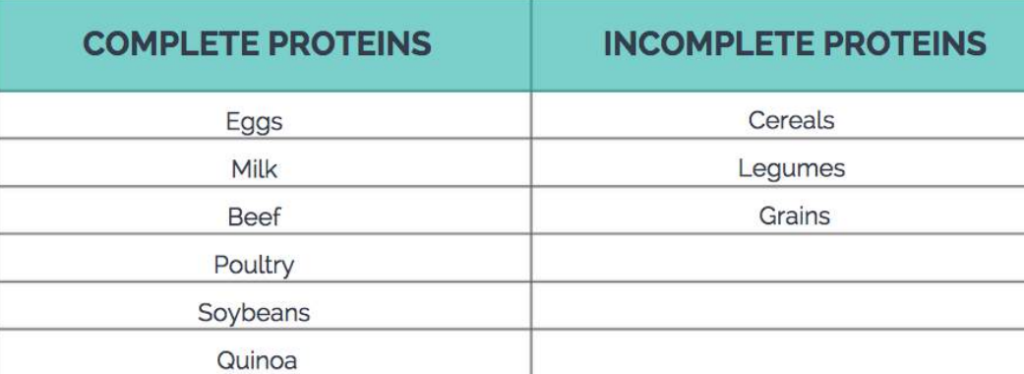
And it is only when these low biological value foods are combined, that you can create a higher biological value in meals. This alone is a key reason as to why animal proteins, like meat and dairy, are so important in our diets.
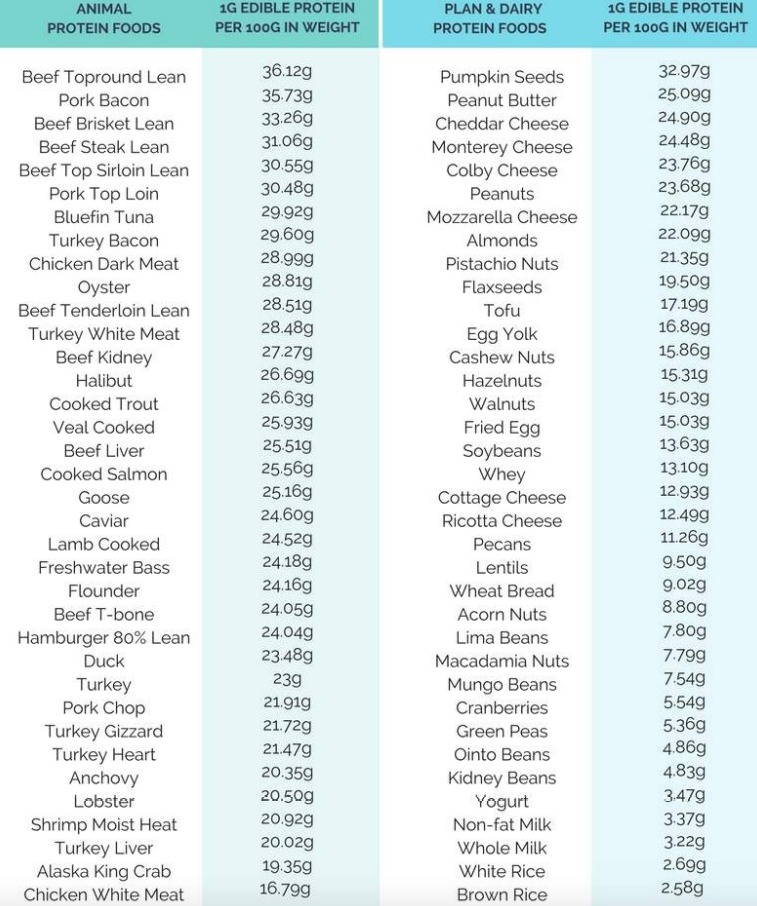
Typically, eggs, milk, beef, poultry, are complete proteins, we also have some plant-based proteins there, but our complete soybeans and quinoa and of course the incomplete proteins like cereals and greens. When we do consume enough high quality and complete proteins, it has a whole host of benefits.
Let’s quickly look at them. Firstly, we have growth and maintenance. This provides the building materials and that’s the amino acids for growth and repair of body tissues.
There are also the body structures, protein forms vital parts of most body structures such as our skin, nails, hair, membranes, muscles, teeth, bones, organs, and even tendons.
They also have a regulatory function like enzymes, so proteins facilitate numerous chemical reactions in the body, and all enzymes are proteins.
Hormones. Some proteins act as chemical messengers, regulating body processes. But not all hormones are proteins.
Antibodies. Proteins assist the body in maintaining its resistance to disease by acting against foreign disease-causing substances.
Fluid balance. Proteins help regulate the quantity of fluids in body compartments. There are also acid base balance proteins which act as buffers to maintain the normal acid and base concentrations in bodily fluids.
Transportation. Proteins move needed nutrients and other substances into and out of cells and around the body.
Energy production. Protein can be used to provide calories, exactly four calories per gram to help meet the body’s energy needs. There are around 50,000 different protein containing compounds in the body and 65% of them are found in the skeletal muscle. When we ingest more protein than we excrete, typically lost in like the urine or faeces or even converted to fat and cholesterol, we are known to be in a positive nitrogen balance. This means we will have a high level of amino acids in our blood and bodily fluids. This process only occurs after regular protein intake, as for amino acids to enter the bloodstream protein must be digested in the stomach.
This occurs when hydrochloric acid creates an active enzyme known as pepsin. Structurally, proteins consist of various combinations of amino acids linked together by peptide bonds. Pepsin is the enzyme responsible for breaking down the peptide bonds to form smaller peptides and of course, amino acids. Here the proteins are passed on to the small intestine. At this point they are finally digested to absorbable amino acids. From here then the amino acids can enter the amino acid pool and will be used in a matter of two ways by the body.
Protein synthesis will create new proteins for the body in terms of body tissue like muscle, liver and kidneys, hormones, enzymes, and all the other previously mentioned functions of proteins. And secondly, it’ll be excreted by urine as urea, which is a nitrogen containing organic compound or converted to fat and/or cholesterol.
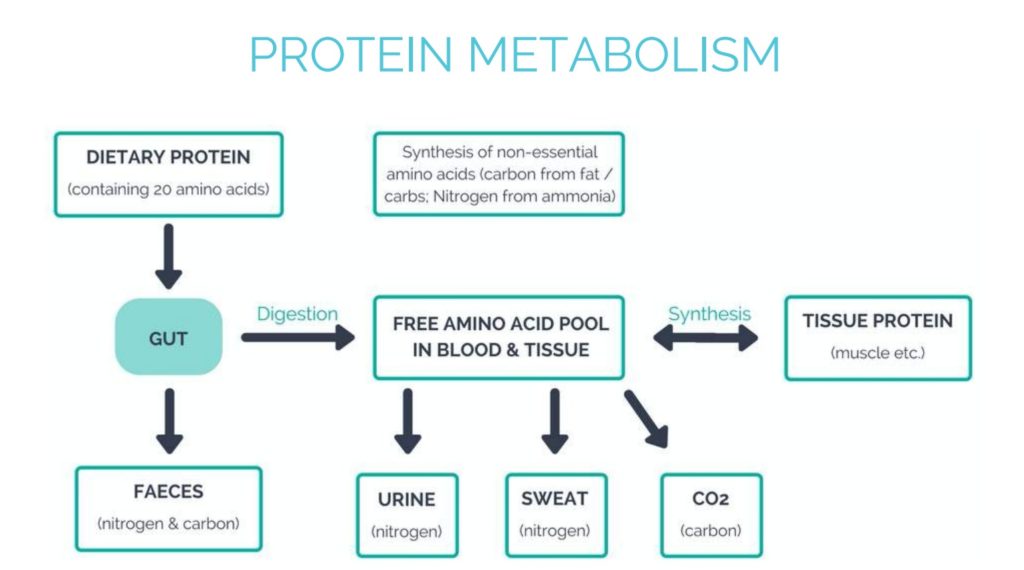
The debate continues how much protein we should be taking daily, but there appears to be a general agreement that active individuals need a higher intake than sedentary people. So, the daily dietary reference intakes suggest 0.8 grams of protein per kilogramme of body weight, or 0.36 grams per pound,
For a man weighing 80 kilogrammes he requires 64 grams of protein. For a woman weighing 60 kilogrammes it is 48 grams of protein. This isn’t a lot of protein. And we now know that for optimal body composition and health, we need a lot more, it’s difficult to put an exact figure in how much protein we need as it all depends on our goals, activity levels, caloric intake, muscle mass, training, schedule, and even current health.
Therefore, we must resort to the research that can help us make the right decisions. Yet again, it seems to vary from source to source. Let’s look at the average intake, for a healthy person have a healthy weight, who’s mainly sedentary and is not seeking changes in body composition, then that intake of 0.4 to 0.6 six grams of protein per pound body weight is going to be sufficient. However, if we look at when we’re losing body fat, protein has a high thermic effect, meaning it boosts our metabolic rate in the process, so we burn more calories, and reduces our appetite, so we eat less calories. This increase in metabolic effect has been shown to be most effective when protein is set to 25% to 30% of daily caloric intake. Having a high protein intake during a calorie deficit is also important, as it is very anabolic, meaning we’re more likely to preserve lean body tissue in the process.
On the flip side of fat loss, we have muscle building, the key to building muscle is protein synthesis, and a higher protein diet will up regulate protein synthesis, providing you have evenly spaced-out meals with protein, which creates a net positive protein balance, resulting in that anabolic, which is that building environment.
The studies that look at muscle mass and protein intake tend to vary from 0.8 to 1 plus grams per pound body weight, so it’s safe to say a balanced approach would be most beneficial.
My recommendations to my clients is usually around about one gram per pound body weight. And it’s highly effective here as well. On the opposite spectrum of perhaps our fat loss and muscle building clients.
We also have active and older people to body composition goals aside, then you may find that some clients are highly active through their jobs or activities like endurance training. The research shows that daily intake of 0.5 to 0.6 grams per pound body weight for these type of people works well. Older people can also benefit from more protein to help prevent ageing diseases, such as osteoporosis, or generally reduction of muscle mass.
The research here then shows a daily intake of 0.45 to 0.6 grams per pound body weight.
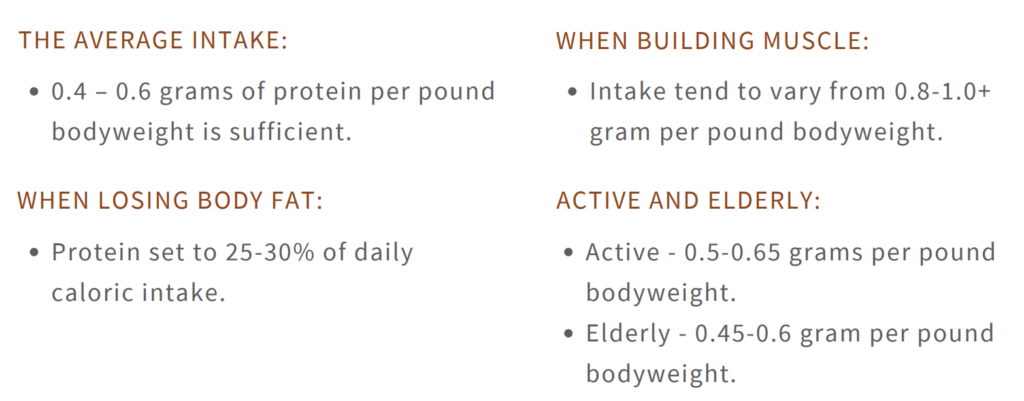
Finally, those recovering from injuries may also benefit from a higher protein diet. We have already discussed that we assess the quality of our protein via the biological value. Therefore, the type of protein we ingest, or our clients will ingest, will improve the results that we say.
We also know that animal proteins are better improving strength and body composition compared to a plant-based approach vegetarian.
However, I know that’s open for debate. Proteins that contain high levels of branched chain amino acids, particularly leucine, will produce greater protein synthesis, which will improve insulin signalling and spare glucose in muscle cells.
Many people will try and tell us that a high protein diet is bad for us. And that is linked to cardiovascular disease and even damaged liver and kidney function. The question that must be asked is show us the accurate research. The small amount of research that may support these dangers appears, well just like many things in nutritional world, to have been greatly exaggerated.
Here’s what you need to know. There is no link to protein causing increased risk of coronary heart disease. There is no link to protein causing liver or kidney damage in healthy subjects. And recent studies show a positive relationship between protein intake and bone health. To quickly summarise you should now understand the importance of protein in the human diet, how it is metabolised, how to measure the quality, and how to assess daily intake for your various clients.
And of course, you can compare protein types, and heck, we even debunked some of the myths that surround it.






